The Best Fluffy & Moist Vanilla Sheet Cake Recipe You’ll Ever Make
If you’re searching for the absolute perfect vanilla birthday cake—one that’s consistently fluffy, incredibly moist, and bursting with rich, authentic vanilla flavor—then look no further. This vanilla sheet cake recipe is designed to deliver perfection every single time. What makes it truly exceptional is a clever combination of both butter and oil, ensuring an unbelievably tender crumb without sacrificing that beloved, classic buttery taste we all crave. It’s a versatile base that shines with any topping, whether you choose a silky vanilla buttercream, a light and airy 7-minute frosting, or something more adventurous. This cake is guaranteed to be a hit at any gathering, from casual weeknight desserts to grand celebrations. Prepare to be asked for the recipe before guests have even finished their first slice—it’s truly one of those irresistible treats you simply can’t stop eating, and honestly, you won’t want to.
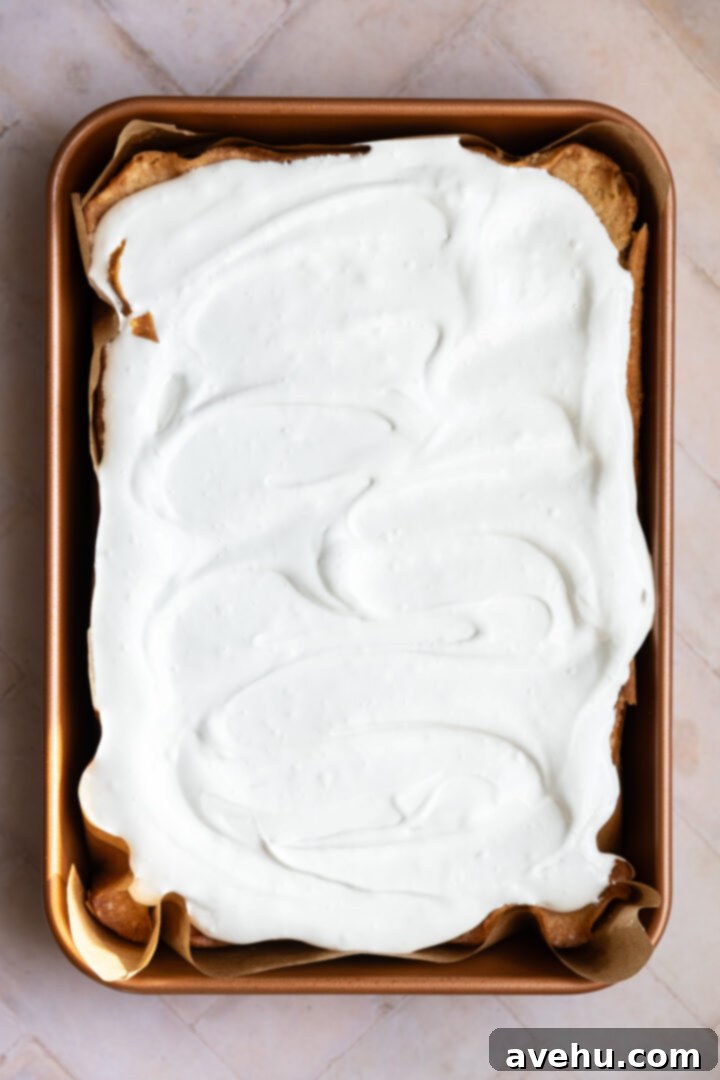
Prepare to meet your new favorite vanilla cake recipe. This is it—the search for the perfect, dream-worthy recipe ends here. From the moment you taste its delicate crumb and rich flavor, you’ll find yourself eagerly anticipating the next opportunity to bake it again. This isn’t just the best vanilla sheet cake I’ve ever created; it stands among the finest cakes I’ve ever made, period. And that’s saying a lot, considering my background.
As a professional baker who owned and operated a custom cake shop for five years, I’ve had the pleasure and challenge of developing and perfecting countless cake recipes. My repertoire includes a vast array of vanilla-flavored creations, from classic yellow cakes with chocolate frosting to elegant vanilla bundt cakes, and even light and airy vanilla cupcakes made with oil. Yet, despite experimenting with so many variations, I consistently return to this particular sheet cake recipe. Its consistent results—a soft, incredibly fluffy texture and an unmistakable bakery-quality taste—make it truly unparalleled.
For this specific cake, I chose to adorn it with my signature 7-minute frosting. This meringue-based, marshmallowy cloud of sweetness is an ideal complement for a simple, single-layer sheet cake. You can serve it as is for a classic look, or, as I often do, lightly torch the frosting to create a beautiful, caramelized finish that adds a touch of sophistication and a hint of smoky sweetness, perfect for a summery vibe or any special occasion. However, the beauty of vanilla lies in its versatility. This cake would be equally incredible paired with a rich chocolate cream cheese frosting, a decadent caramel frosting, or even a vibrant fruit curd for a contrasting flavor profile. The possibilities are truly endless!
Moist for Days: The Secret to an Irresistible Crumb
The secret behind this cake’s unbelievably fluffy texture and its ability to remain moist for several days lies in a carefully balanced trio of ingredients: creamed butter, vegetable oil, and buttermilk. Each component plays a crucial role in achieving this perfect harmony of flavor and texture, setting this recipe apart from others.
First, creaming the butter and sugar together is more than just mixing; it’s a vital step for aeration. This process incorporates tiny pockets of air into the mixture, which expand during baking, giving the cake its lift and light, fluffy structure. The butter itself contributes that classic, rich flavor that we associate with homemade baked goods.
Next, the addition of vegetable oil is a game-changer for moisture. Unlike butter, which is solid at room temperature, oil remains liquid, ensuring the cake’s crumb stays tender and soft long after it cools. Oil coats the flour proteins, inhibiting excessive gluten development, which can lead to a tough cake. This results in an incredibly delicate and melt-in-your-mouth texture that truly lasts.
Finally, buttermilk introduces a delightful tang and an extra layer of moisture. Its acidity reacts with the baking soda, creating carbon dioxide bubbles that further contribute to the cake’s airy texture. Moreover, the acidity in buttermilk also helps to tenderize the gluten in the flour, resulting in an even softer crumb. This powerful combination ensures a cake that is not only moist and tender straight out of the oven but also retains its freshness and exquisite texture for days, making it perfect for preparing in advance.
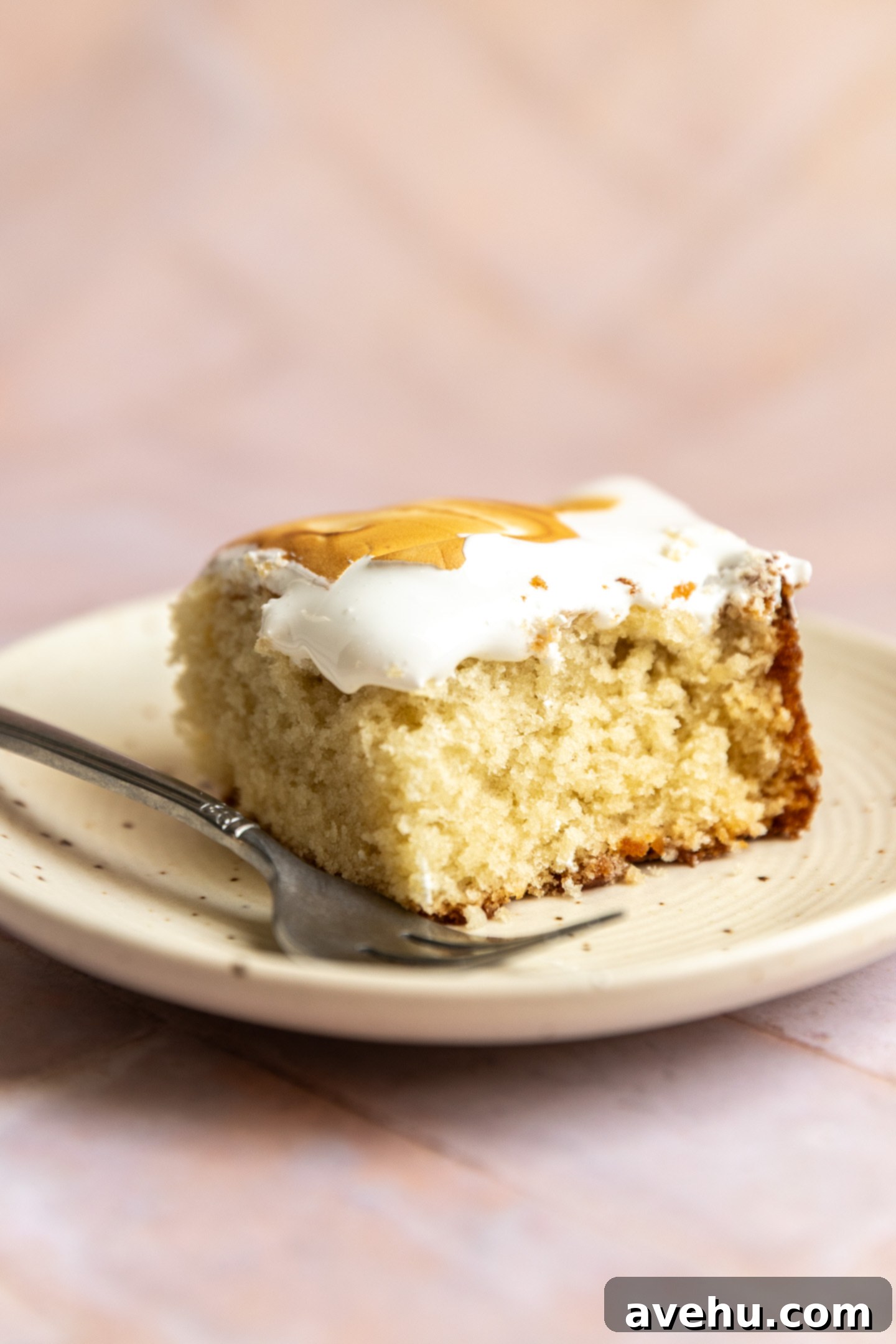
The Baking Process: Step-by-Step for Perfect Results
Achieving a perfect vanilla sheet cake is simple when you follow these clear steps. Each stage of the process contributes to the cake’s overall texture and flavor.


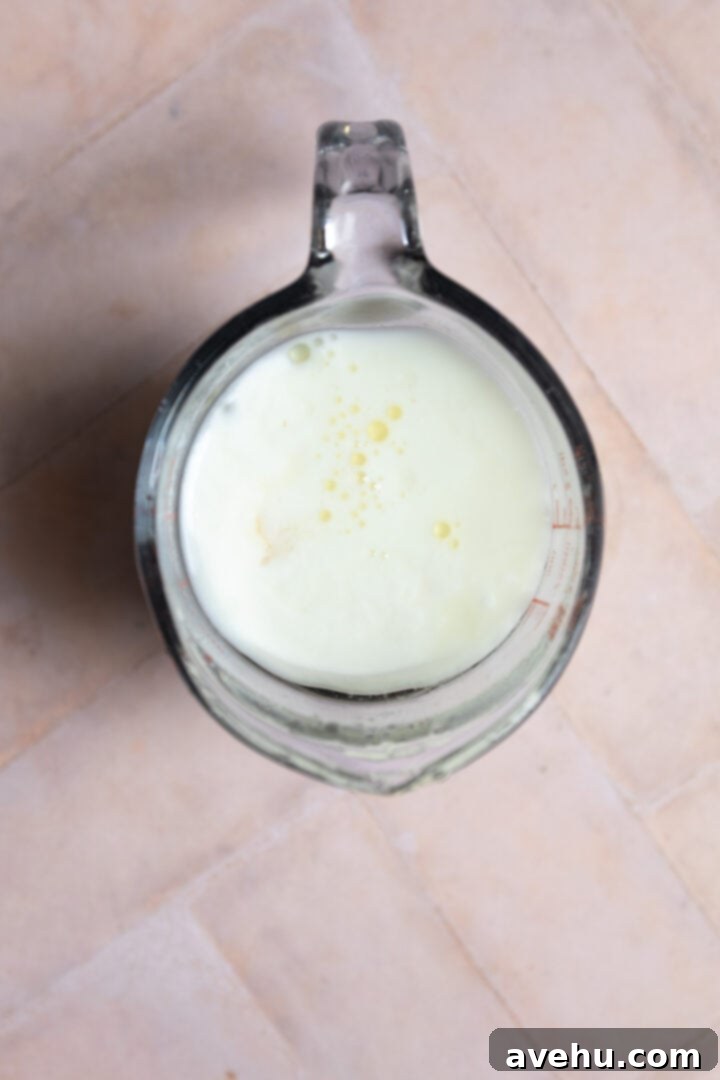
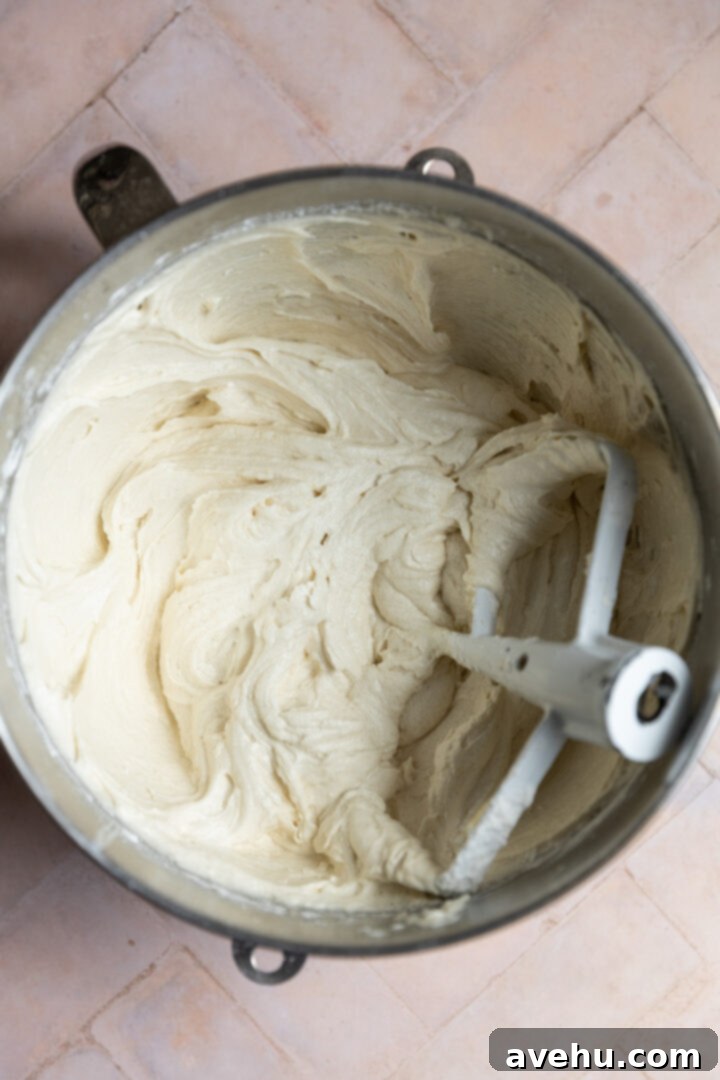
Perfect Pan Preparation for an Easy Release
One of the most frustrating baking experiences is when a beautifully baked cake sticks to the pan. Luckily, with a few simple steps, you can guarantee an easy release every time. While I often rely on a baking spray containing flour for its convenience and effectiveness, sometimes you might find yourself without it. That’s exactly what happened this time!
When I ran out of my preferred baking spray, I opted to line the pan with parchment paper, and it worked just as beautifully. Both methods are highly effective, but the key is consistency: never skip this crucial step, or you risk your cake adhering firmly to the pan, making removal a messy and disheartening task. Whether you generously spray your pan or meticulously line it, taking the time for proper preparation will save you a lot of hassle and ensure your cake comes out perfectly intact.
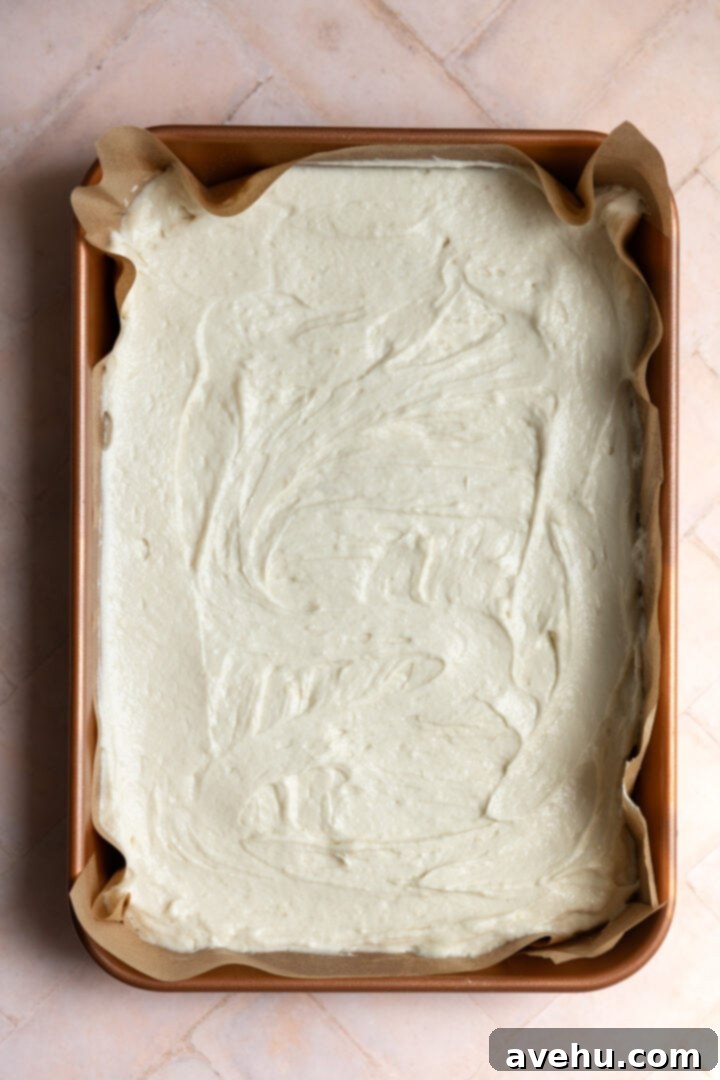
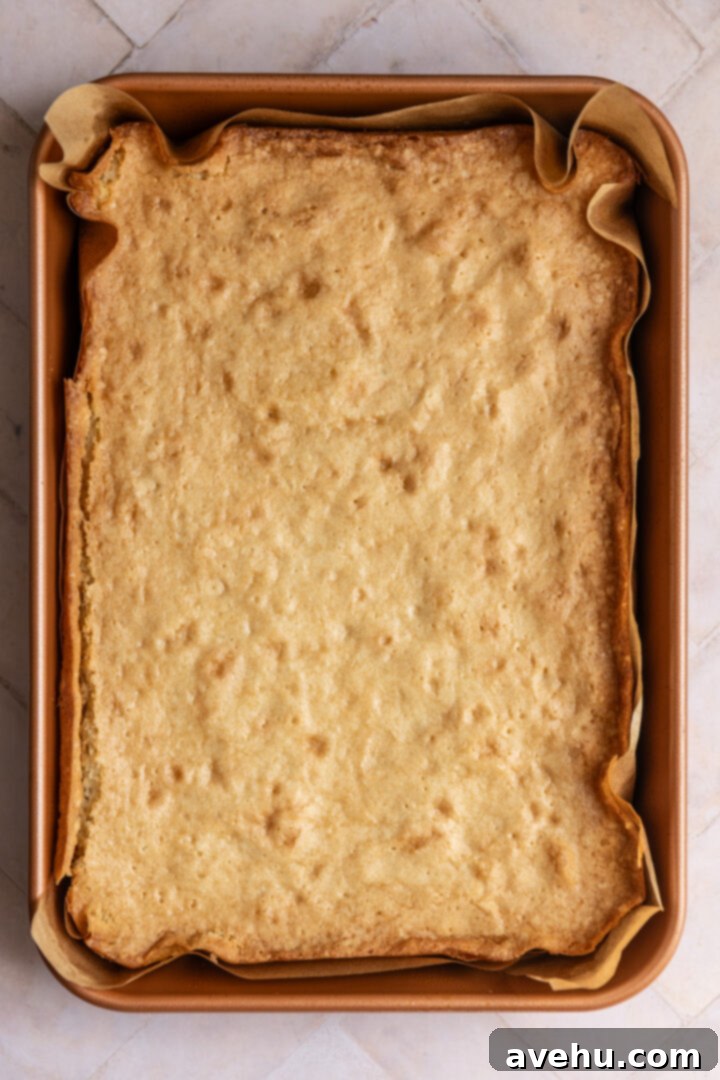
Frosting Your Masterpiece: Tips for a Beautiful Finish
The key to a beautifully frosted cake is patience, especially when it comes to cooling. After baking, let your cake cool in the pan for about 10 to 15 minutes. This allows the cake to set and firm up slightly. Then, carefully invert it onto a wire rack to cool completely. It’s crucial that the cake is entirely cool to the touch before you even think about applying frosting. Attempting to frost a warm cake will only result in melted, messy frosting and a disappointing finish.
Once your vanilla sheet cake is perfectly chilled, the fun begins! You have complete creative freedom when it comes to decorating. You can pipe intricate designs and patterns for an elegant presentation, or simply slather on your chosen frosting with an offset spatula for a charmingly rustic, homemade look, much like I did here. This cake is incredibly versatile and resilient, making it a fantastic base for all sorts of celebrations and themes. We genuinely adore this cake for its adaptability. I frequently bring it to friends’ parties, from casual Super Bowl gatherings and lively barbecues to more unique events. Just last week, I even used this exact recipe to bake a cake in a rather hilarious eggplant shape! Yes, it was absolutely comical, and it disappeared just as fast as any other perfectly round cake. If you’re curious, leave a comment or send me an email—I’d be happy to share the pic, LOL!
Expert Baking Tips for a Flawless Vanilla Sheet Cake
To ensure your vanilla sheet cake turns out perfectly every single time, here are some expert tips that bakers swear by:
- Room Temperature Ingredients: This is perhaps the most critical tip. Make sure your butter, eggs, and buttermilk are all at room temperature. Room temperature butter creams better with sugar, incorporating more air for a lighter cake. Room temperature eggs emulsify more easily into the batter, preventing curdling and creating a smoother, more uniform texture. Cold ingredients can cause the batter to seize, resulting in a dense cake.
- Measure Flour Correctly: Do not scoop flour directly from the bag with your measuring cup, as this compacts the flour and leads to an excessive amount, resulting in a dry cake. Instead, use the “spoon and level” method: spoon the flour into your measuring cup until it’s overflowing, then level it off with a straight edge (like the back of a knife). For ultimate precision, a kitchen scale is always recommended.
- Do Not Overmix: Once you start adding the dry ingredients, mix only until just combined. Overmixing develops the gluten in the flour, leading to a tough, chewy cake. A few small lumps are perfectly fine; they will disappear during baking.
- High-Quality Vanilla Extract: Vanilla is the star of this cake, so invest in a good quality pure vanilla extract (or even vanilla bean paste) for the best flavor. Imitation vanilla simply won’t yield the same rich, aromatic results.
Storage and Make-Ahead Instructions
This vanilla sheet cake is renowned for its ability to stay fresh and moist for days, making it an excellent candidate for advance preparation.
- Storing Unfrosted Cake: Once the cake has cooled completely, you can wrap it tightly in plastic wrap (or aluminum foil) and store it at room temperature for up to 2-3 days. For longer storage, you can freeze the unfrosted cake. Wrap it securely in plastic wrap, then an additional layer of aluminum foil, and freeze for up to 2-3 months. Thaw overnight in the refrigerator before frosting.
- Storing Frosted Cake: A frosted cake can be stored in an airtight container at room temperature for 2-3 days. If your frosting contains cream cheese or fresh fruit, it’s best to refrigerate the cake. Bring it back to room temperature for about 30 minutes before serving to ensure the best texture and flavor.
Frequently Asked Questions
Here are some common questions about baking this delightful vanilla sheet cake:
- Can I substitute regular milk for buttermilk? You can make a homemade buttermilk substitute by adding 1 tablespoon of lemon juice or white vinegar to a liquid measuring cup, then filling the rest with regular milk (whole milk works best) to the ¾ cup line. Let it sit for 5-10 minutes until it slightly curdles. While this works, real buttermilk offers a superior flavor and texture, so it’s always recommended if available.
- Can I make cupcakes with this recipe? Absolutely! This recipe yields fantastic cupcakes. Fill standard muffin liners about two-thirds full and bake for approximately 18-22 minutes at 350°F (175°C), or until a toothpick inserted into the center comes out clean.
- Why did my cake turn out dry/dense? A dry cake is often due to overbaking or too much flour (from improper measuring). A dense cake can result from overmixing the batter, using cold ingredients, or incorrect leavening agent ratios. Double-check your measurements, baking time, and ensure all ingredients are at room temperature.
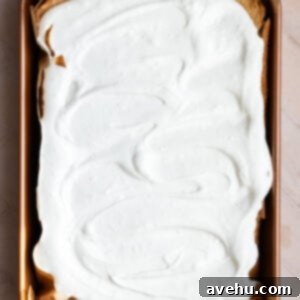
The Best Vanilla Sheet Cake I Ever Made
10 minutes
35 minutes
45 minutes
15 people
Pin
Review
SaveSaved!
Ingredients
- 1 cup butter, (227g)
- 2 cups sugar, (400g)
- ¼ cup vegetable oil
- 3 large eggs, room temperature
- 2 ¾ cup all purpose flour, (330g)
- 1 tsp baking powder
- ½ tsp baking soda
- ½ tsp salt
- 1 tbsp vanilla extract
- ¾ cup buttermilk, room temperature
Instructions
-
Preheat your oven to 350°F (175°C) and prepare your 9×13 inch baking pan (see “Lining the Pan” section for details).
-
In the bowl of a stand mixer fitted with the paddle attachment (or using a hand mixer), add the 1 cup of softened butter and 2 cups of sugar. Cream on medium speed for about 2 minutes until the mixture is light, fluffy, and pale in color.
-
Pour in the ¼ cup of vegetable oil and mix until just combined. Then, add the 3 large eggs one at a time, mixing well after each addition on medium speed, scraping down the sides of the bowl as needed.
-
In a separate medium bowl, combine the 2 ¾ cups of all-purpose flour, 1 tsp baking powder, ½ tsp baking soda, and ½ tsp salt. Whisk lightly to ensure all dry ingredients are evenly distributed.
-
In a measuring cup, combine the ¾ cup of buttermilk and 1 tbsp of vanilla extract. Stir gently to mix.
-
With the mixer on low speed, alternately add the dry ingredients and wet ingredients to the butter mixture in three additions, starting and ending with the dry ingredients. Mix just until combined after each addition; avoid overmixing.
-
Pour the batter evenly into your prepared 9×13 inch pan. Gently smooth the top with an offset spatula if necessary.
-
Bake for 35 minutes, but begin checking for doneness after 30 minutes. The cake is done when the top is golden brown, the edges start to pull away from the sides of the pan, and a wooden skewer or toothpick inserted into the center comes out clean.
-
Allow the cake to cool in the pan for 15-20 minutes. Then, carefully invert it onto a wire rack to cool completely. Ensure the cake is fully cooled before proceeding to the next step.
-
Frost with your desired frosting, such as this delicious 7-minute frosting, once the cake is entirely cool.
